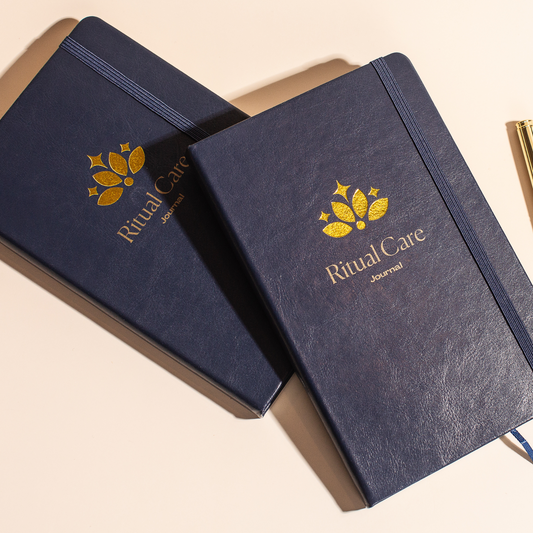As the days get longer, nature beckons you outside for a summer full of fun. The sun invites you to sit, relax, and play in its warmth. Your family and friends get together on the beach, in your backyard, or at a local park for hours on end. Life is good, and it’s natural to want to embrace as much of it as you can. Just be safe and smart while doing it. While soaking up the sun can boost your mood and your body’s vitamin D levels, frequent overexposure to ultraviolet radiation (UV) from it can damage your skin.
The most commonly known benefit of sun exposure is inducing production of vitamin D, a critical steroid hormone that acts on receptors throughout the body, influencing bone health, heart function, and inflammation. Vitamin D is unique because it can be made in the skin from exposure to sunlight. When UVB rays from the sun (shortwave UV radiation that tends to cause skin reddening and sunburn) strike exposed skin, the body can synthesize vitamin D3, which is then transformed by the liver and kidneys into the biologically active hormone.
Due to a variety of factors including lifestyle and environment, vitamin D insufficiency affects almost 50 percent of the population worldwide. If you think you have a Vitamin D deficiency, ask your doctor for a simple blood test to measure your levels.
While there are different ways you can increase your Vitamin D levels, emerging research suggests that natural sun exposure may regulate vitamin D in a way that supplements cannot mimic. For example, vitamin D produced in the skin may last at least twice as long in the blood compared with ingested vitamin D.
Like most things related to health, bioindividuality and lifestyle habits are important when it comes to sun exposure. Certain groups of people are more susceptible to the negative impacts of UV sun exposure and may require different strategies to avoid harm. For example, those with certain autoimmune conditions such as lupus can be exceptionally sun sensitive. Further, medications such as tetracycline antibiotics, used to treat various infections, can increase sun sensitivity.
People with a personal or family history of skin cancer or other genetic susceptibilities, which can make it more difficult to repair UV-induced DNA damage, need to be more vigilant to avoid too much sun exposure.
Synthetic fragrances should also be avoided in all personal care products, including sunscreens. These chemicals, such as parabens, phthalates, and synthetic musks, are linked to endocrine disruption, reproductive impacts, and even cancer. Instead, look for non-nano (meaning the particles are less likely to be absorbed by your skin) physical or mineral-based sunscreens like zinc oxide with an SPF no less than 15.
Also, avoid spray or powdered sunscreens. These may seem convenient, but they release toxic fumes when sprayed, which you can breathe into your lungs. Instead, opt for cream or lotion formulations for more controlled application.
As you head outdoors this summer, be sure to take care of your skin. By following these dos and don’ts of sun exposure, you can keep your skin healthy and beautiful.
*Editor’s Note: The information in this article is intended for your educational use only; does not necessarily reflect the opinions of the Chopra Center's Mind-Body Medical Group; and is not a substitute for professional medical advice, diagnosis, or treatment. Always seek the advice of your physician or other qualified health providers with any questions you may have regarding a medical condition and before undertaking any diet, supplement, fitness, or other health program.
Experience profound rest and renewal by attuning to the natural rhythms of your body at the Chopra Center’s Perfect Health, a six-day Ayurvedic cleanse retreat. Learn More.
Benefits of Sun Exposure
There are many health benefits from a healthy amount of sun exposure. Sun exposure can play an important role in:- Boosting hormones like vitamin D
- Reducing blood pressure and improving cardiovascular health
- Improving mood by releasing endorphins
The most commonly known benefit of sun exposure is inducing production of vitamin D, a critical steroid hormone that acts on receptors throughout the body, influencing bone health, heart function, and inflammation. Vitamin D is unique because it can be made in the skin from exposure to sunlight. When UVB rays from the sun (shortwave UV radiation that tends to cause skin reddening and sunburn) strike exposed skin, the body can synthesize vitamin D3, which is then transformed by the liver and kidneys into the biologically active hormone.
Due to a variety of factors including lifestyle and environment, vitamin D insufficiency affects almost 50 percent of the population worldwide. If you think you have a Vitamin D deficiency, ask your doctor for a simple blood test to measure your levels.
While there are different ways you can increase your Vitamin D levels, emerging research suggests that natural sun exposure may regulate vitamin D in a way that supplements cannot mimic. For example, vitamin D produced in the skin may last at least twice as long in the blood compared with ingested vitamin D.
Risks of Sun Exposure
While there are multiple benefits to sun exposure, there are also risks. Sunlight includes rays of invisible ultraviolet light of varying wavelengths (UVB and UVA), which can contribute to:- Sunburn
- Accelerated skin aging
- Skin cancer
- Cataracts
Like most things related to health, bioindividuality and lifestyle habits are important when it comes to sun exposure. Certain groups of people are more susceptible to the negative impacts of UV sun exposure and may require different strategies to avoid harm. For example, those with certain autoimmune conditions such as lupus can be exceptionally sun sensitive. Further, medications such as tetracycline antibiotics, used to treat various infections, can increase sun sensitivity.
People with a personal or family history of skin cancer or other genetic susceptibilities, which can make it more difficult to repair UV-induced DNA damage, need to be more vigilant to avoid too much sun exposure.
Dos and Don’ts of Sun Exposure
To safely enjoy the sun and receive its health benefits, while still preventing overexposure and damage, consider these dos and don’ts of sun exposure. Adjust these approaches based on your individual needs, lifestyle, and susceptibilities.Do Spend Short Amounts of Time in the Sun
Expose unprotected skin to the sun for 10 to 20 minutes at times of the year and day when UVB rays are optimal for vitamin D production. The best time for sun exposure is around noon, when UVB rays are most likely to reach your skin and boost vitamin D production, and when UVA rays, which increase the risk of skin cancer and photodamage, are minimized.Do Check Your Vitamin D Levels
It’s a good idea to have your doctor check your vitamin D levels, especially if you live at a more northern location and during the winter when there may not be enough UVB rays to reach you to produce adequate vitamin D from the sun. Then start the conversation about healthy ways to boost your vitamin D levels.Do Incorporate Natural Dietary Skin Support
Many of the fresh healthy foods available in summer can help fortify your skin. For example, a mix of carotenoids including lycopene (found in tomatoes and watermelon), lutein (found in spinach and other dark-green veggies), and beta-carotene (found in orange, red, and yellow produce) can reduce your skin’s susceptibility to ultraviolet damage. Astaxanthin, a carotenoid pigment found in microalgae and seafood like salmon, shellfish, and krill, also contributes to skin health.Do Stay Calm and Breathe
One study found a correlation between stress and skin cancer in mice. These findings have led researchers to believe that, even for humans, chronic stress can increase the susceptibility of your skin to UV damage. Stress weakens the immune system and makes you more susceptible to free radical damage, which can lead to cancer. Adopting regular stress management practices such as meditation, yoga, and mind-body practices like those described in The Whole Cure can make you more resilient to resist the damaging impacts of chronic stress, including sun damage and skin cancer.Do Find or Create Shade
One of the best ways to enjoy a sunny day without suffering damage is to minimize your time spent in the strongest rays. This means staying in the shade when possible to avoid extensive time in strong sun and wearing lightweight, long-sleeved shirts, pants, and wide-brimmed hats that are specifically designed to block UV rays.Do Choose a Safer Sunscreen
Sunscreen provides either a chemical or physical barrier against the sun’s rays. When choosing a sunscreen, ingredients matter to ensure adequate protection without harmful endocrine-disrupting chemicals, potentially affecting reproduction and development hormones. Some toxic ingredients to look for and avoid include oxybenzone, octinoxate, retinyl palmitate, and homosalate, which can alter hormones and/or cause skin irritation.Synthetic fragrances should also be avoided in all personal care products, including sunscreens. These chemicals, such as parabens, phthalates, and synthetic musks, are linked to endocrine disruption, reproductive impacts, and even cancer. Instead, look for non-nano (meaning the particles are less likely to be absorbed by your skin) physical or mineral-based sunscreens like zinc oxide with an SPF no less than 15.
Also, avoid spray or powdered sunscreens. These may seem convenient, but they release toxic fumes when sprayed, which you can breathe into your lungs. Instead, opt for cream or lotion formulations for more controlled application.
Don’t Get Burned
Avoid excessive sun exposure, which leads to redness, blistering, or peeling skin. This is a sign of too much sun exposure leading to DNA damage, which can contribute to your risk of skin cancer.Don’t Forget the Delicate Skin Around Your Eyes, Face, and Neck
A good hat with a wide, protective brim or neck guard is one of the best ways to protect the delicate skin of your face and neck. Sunglasses are also crucial for protecting the eyes from UV damage. Look for the label UV400 or “Blocks 99-100% of UV Rays.” UV-blocking, wrap-style sunglasses can help block rays from all sides. It is also important to remember your lips, nose, and ears, which are more vulnerable.Don’t Be Fooled by Cloudy or Cold Days
UVA rays, which contribute to skin cancer, can penetrate cloud cover and still burn and damage your skin. Even when it is not hot, the sun can be damaging. In fact, sun exposure in the winter can be especially intense when rays are reflected off snow and ice.Don’t Forget Sun Exposure Through Windows
While window glass efficiently filters out most UVB radiation, it only minimally filters out UVA rays because these rays have a longer wavelength. This is particularly harmful since this type of exposure provides UVA radiation without the potential vitamin-D boosting benefits from UVB. Remember that you can be exposed to these damaging rays through windows in your home, office, or car, so use appropriate protection wherever you are.As you head outdoors this summer, be sure to take care of your skin. By following these dos and don’ts of sun exposure, you can keep your skin healthy and beautiful.
*Editor’s Note: The information in this article is intended for your educational use only; does not necessarily reflect the opinions of the Chopra Center's Mind-Body Medical Group; and is not a substitute for professional medical advice, diagnosis, or treatment. Always seek the advice of your physician or other qualified health providers with any questions you may have regarding a medical condition and before undertaking any diet, supplement, fitness, or other health program.
Experience profound rest and renewal by attuning to the natural rhythms of your body at the Chopra Center’s Perfect Health, a six-day Ayurvedic cleanse retreat. Learn More.






















